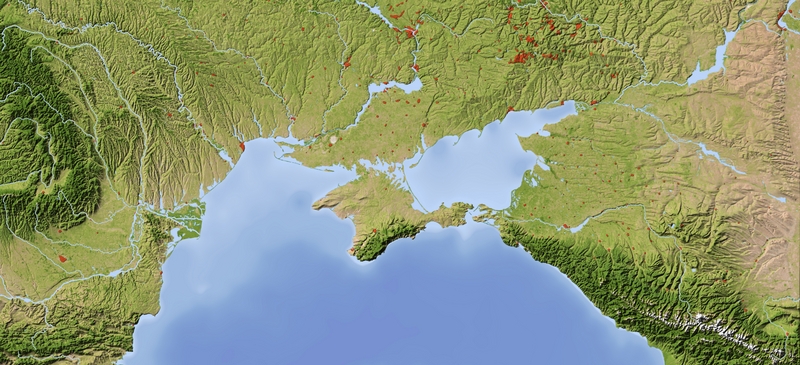
Can the EU thaw frozen conflicts
by Tomas Valasek
The Czech government floated proposals in May that would see the EU take a more active role in solving frozen conflicts in eastern Europe. The Czechs hold the EU’s rotating presidency next year, so their wish may become reality. But just what exactly can the EU offer? The four conflicts in Europe’s east, South Ossetia and Abkhazia, Nagorno-Karabakh, and Transdniestria, have been ‘frozen’ for so long that even hardened optimists have lost hope.
To investigate, I recently joined a German Marshall Fund-organised trip to one such ‘frozen’ place, Transdniestria. It’s a small, poor region, populated by ethnic Russians, Moldovans and Ukrainians. In 1992, it broke away from Moldova, which is only somewhat larger, equally poor, and populated by the same mix of Russians, Moldovans and Ukrainians (albeit in somewhat different proportions). The conflict over Transdniestria is a strange one indeed. There are no obvious ethnic cleavages. Its citizens mingle freely. Some 7,000 Transdniestrians study in Moldova, and 30,000 of them hold Moldovan transports. All major Transdniestrian businesses are registered in Moldova, which allows them to use Moldova’s privileged access to Russian and EU markets. The only person to die on the Moldova-Transdniestrian administrative border in recent years, the OSCE says, was a ‘visiting’ prostitute. She died when a patrolman accidentally discharged his rifle during the amorous act.
But there is no such thing as an ‘easy’ frozen conflict, and even Transdniestria, with its lack of obvious differences from Moldova, stubbornly resists re-integration. So what can the EU do to help? It turns out the EU has done much already: it helped bring about the relatively close business relationship that the two constituent parts of Moldova enjoy. But it could do more.
In November 2005 the EU launched a Border Assistance Mission to Moldova and Ukraine (EUBAM). The Moldovans deem it a massive success. The mission’s 120 customs and border experts trained officials working along the Ukrainian-Moldovan border. The EU-trained force has succeeded in seriously cutting smuggling from Transdniestria to Ukraine, effectively removing the breakaway republic’s major source of income. So Transdniestrian businesses have registered with Moldova in order to gain rights to export to Russia and the EU. This represents the most visible step towards re-integration of Moldova and Transdniestria to date.
More needs to be done to help nudge Transdniestria and Moldova together. In the long run, Moldova’s best hope for re-unification lies in making itself attractive to the Transdniestrians. It needs to become a much freer, more prosperous place. This would erode the authority of Transdniestria’s rulers, and entice the region’s population to support re-unification.
To this end, the Moldovans have launched drastic economic reforms. For example, they have cut corporate taxes to zero to entice foreign investors. But the economy is not picking up nearly as fast as it could. Moldova remains deeply corrupt, which discourages entrepreneurs and investors.
The country is not doing well on the political front either. It is a much freer society than Transdniestria (which is essentially a one-person fiefdom). But Moldova’s president, Vladimir Voronin, also has a serious authoritarian streak. He treats the opposition with disdain and arrogance. Worse, he rigs the system in his favour. His Communist party uses its control of public TV (the only source of news for about 80 per cent of Moldovans) to keep out ‘undesirable’ politicians and analysts. Voronin changed the election law in a way that will make it difficult for the (badly divided) opposition to form effective coalitions against him.
As a result, ordinary Transdniestrians do not see enough difference between Moldova and their own, even more corrupt and authoritarian leadership. Moldova is a freer and happier place than Transdniestria, but not dramatically so. It is not losing the battle for the hearts of the Transdniestrians, but it is not winning it either.
So the EU’s best contribution to solving Moldova’s frozen conflict lies in pressuring Chisinau to clean up corruption and keep society free. The EU has serious influence in Moldova. The country wants to join the European Union, and it has modelled its economic and political reforms after the new EU member-states. When the EU speaks, Moldova has a compelling reason to listen. What Brussels says, and what the Moldovans need to hear more often, is that the faster you grow and the freer you become the greater the chances of accession. Better yet: the freer and richer you become, the more attractive Moldova looks in the eyes of ordinary Transdniestrians. So Moldova would stand a better chance not only of joining the EU, but of joining it as a newly re-united state with Transdniestria.
Tomas Valasek is director of foreign policy and defence at the Centre for European Reform.
